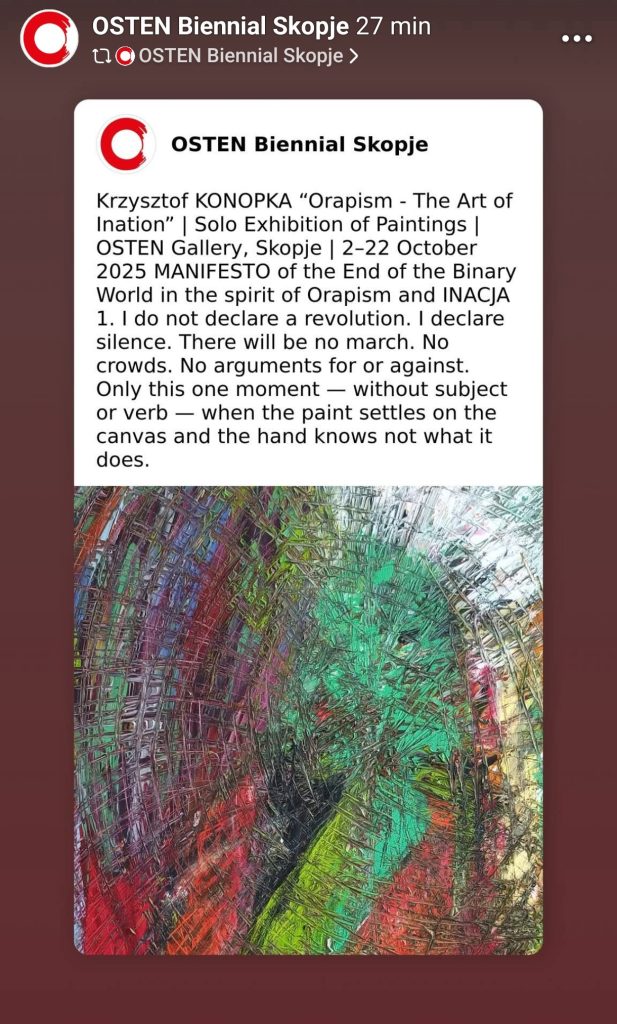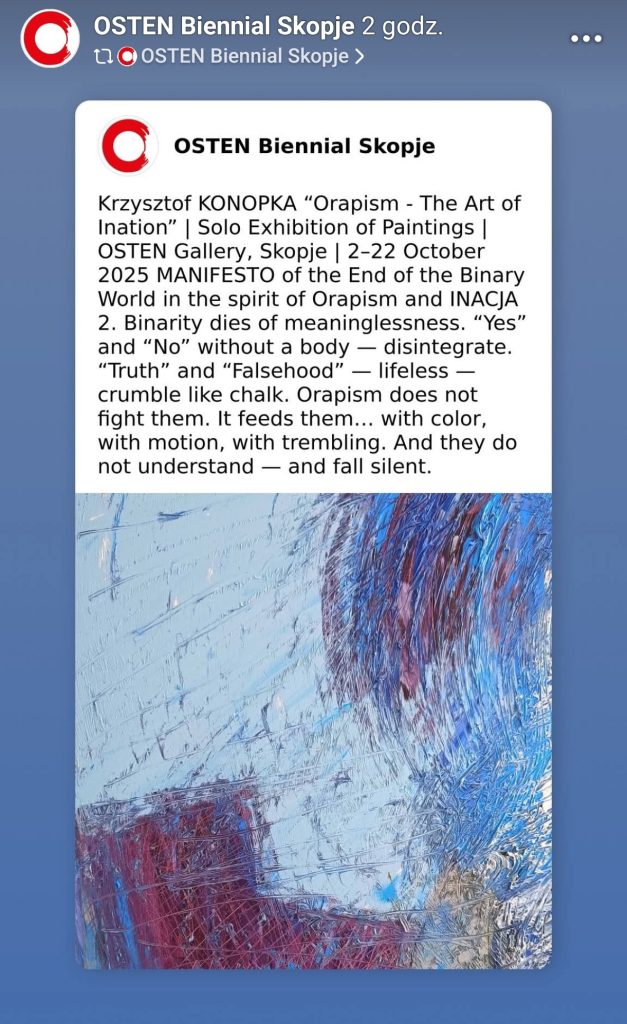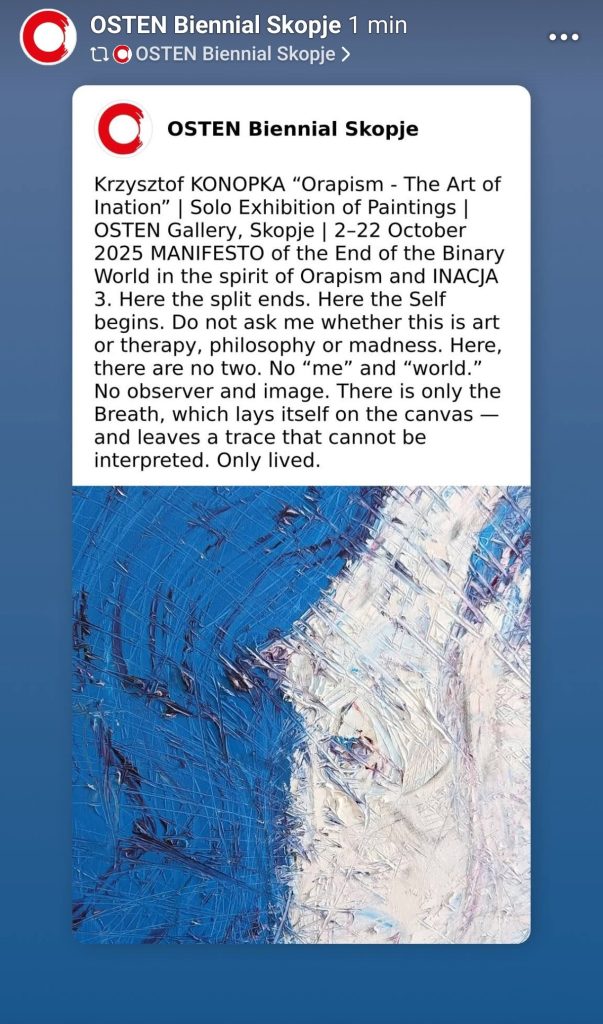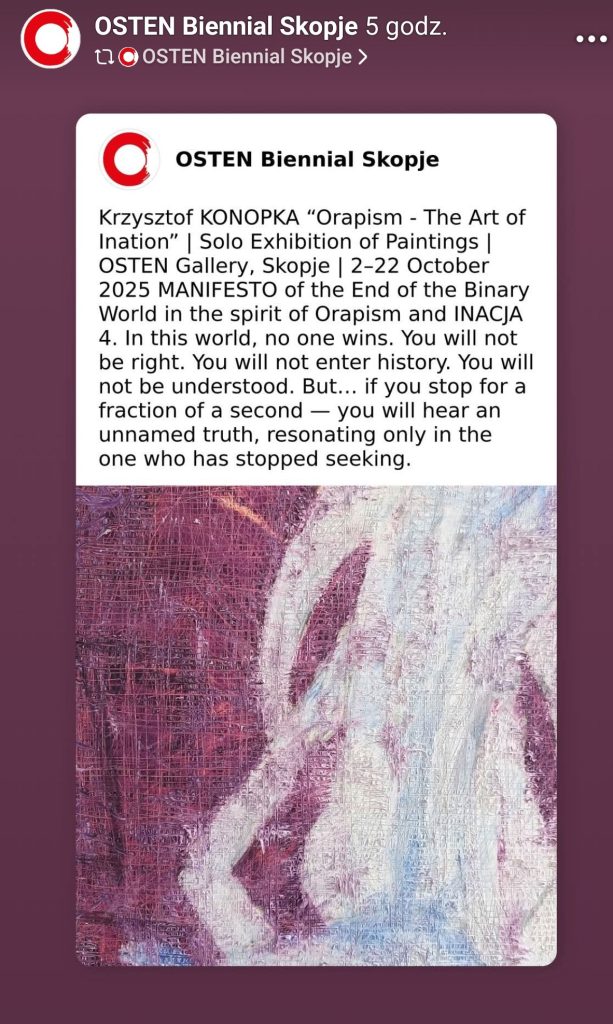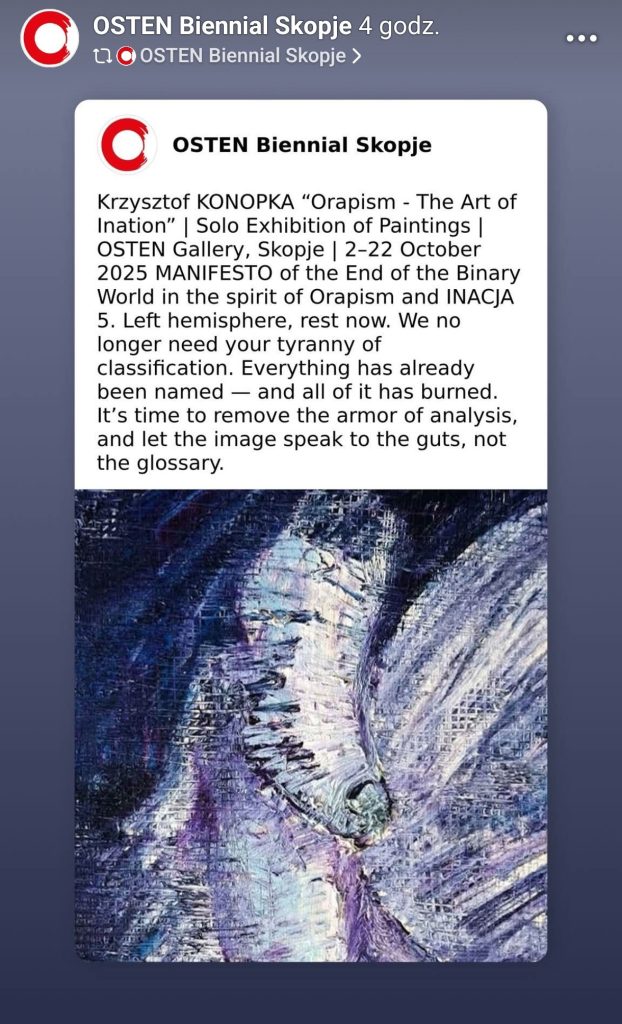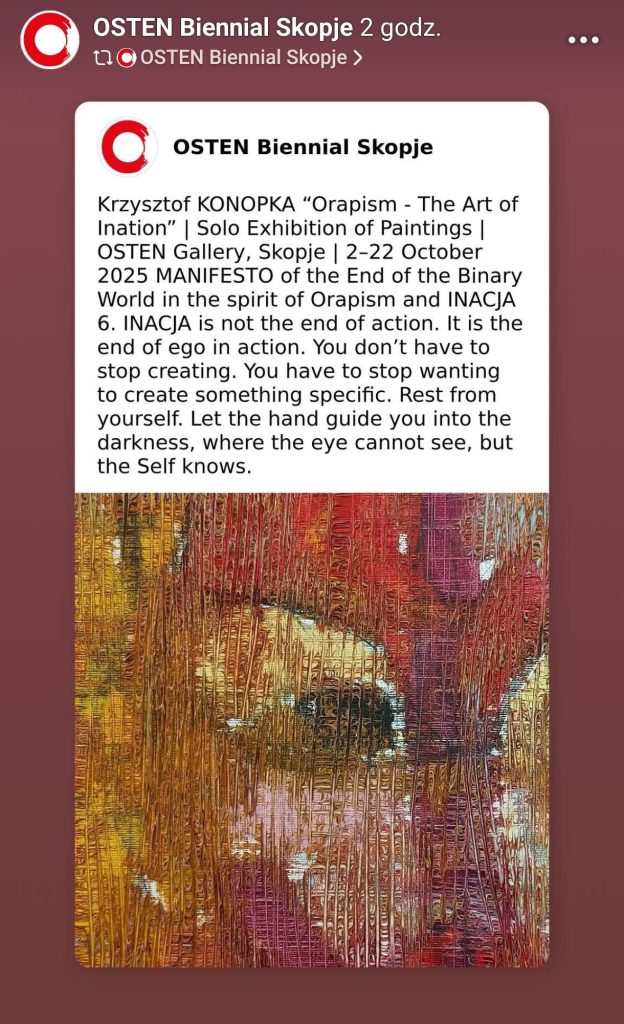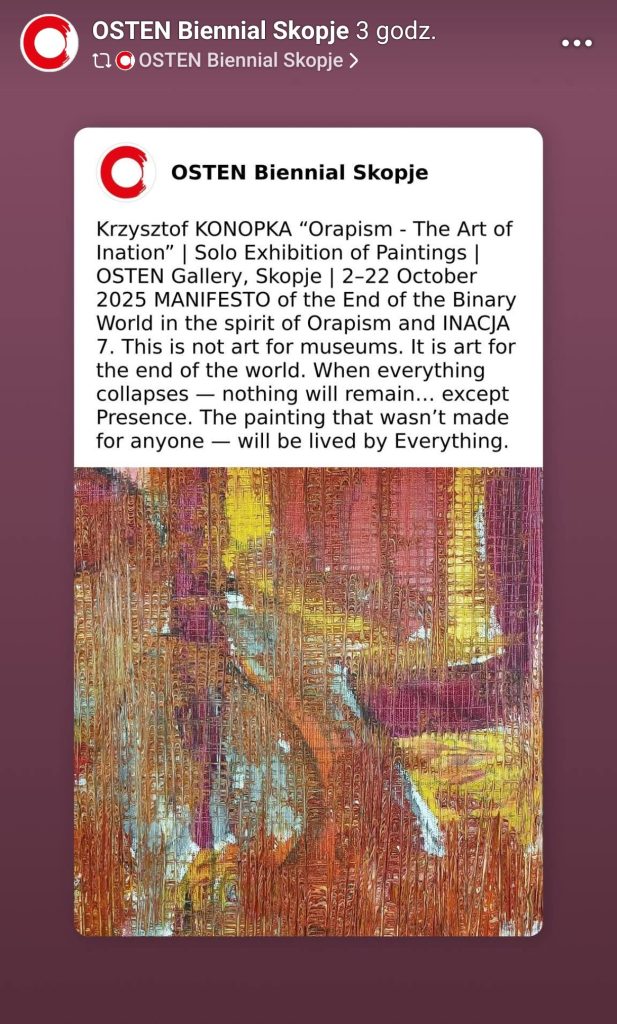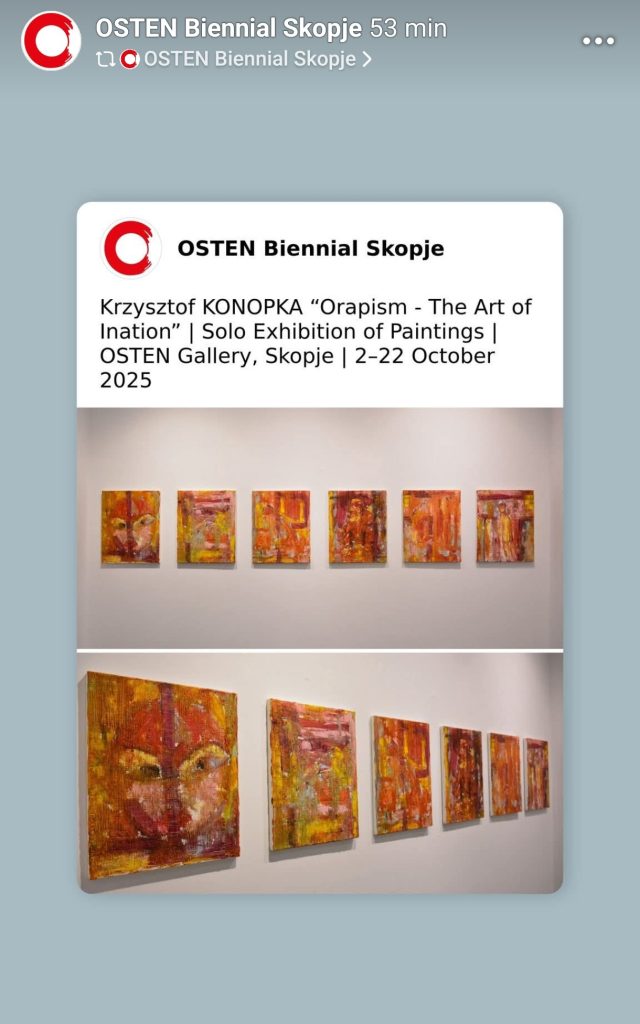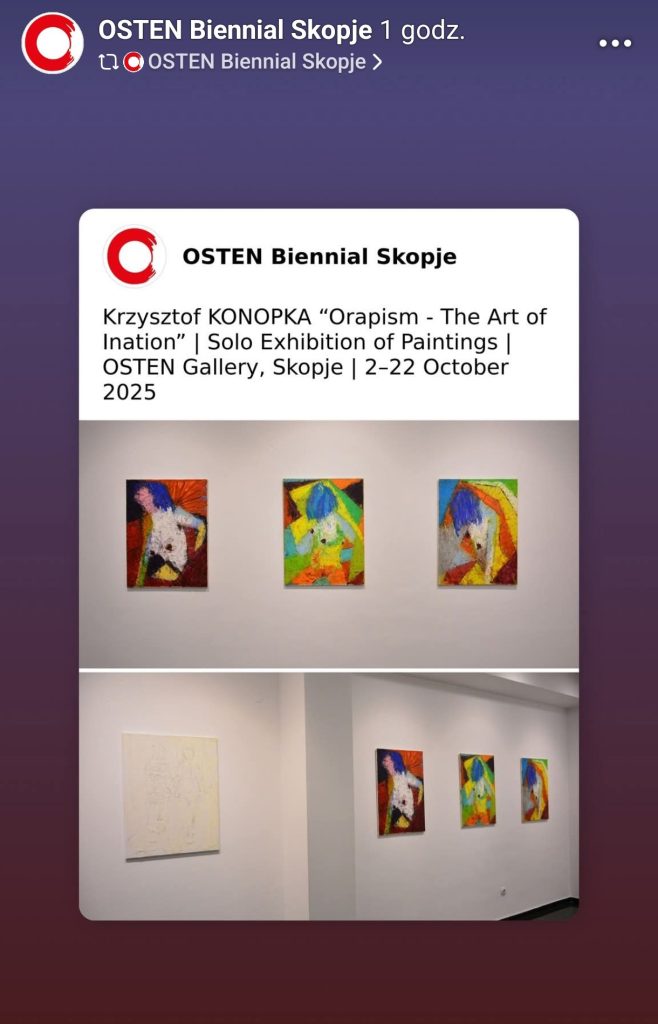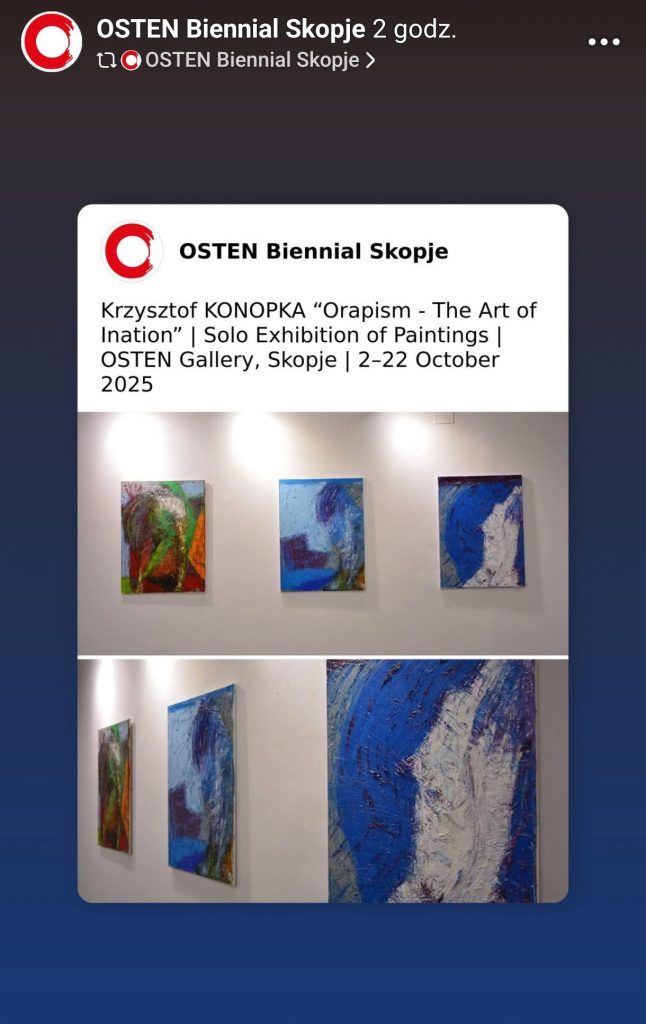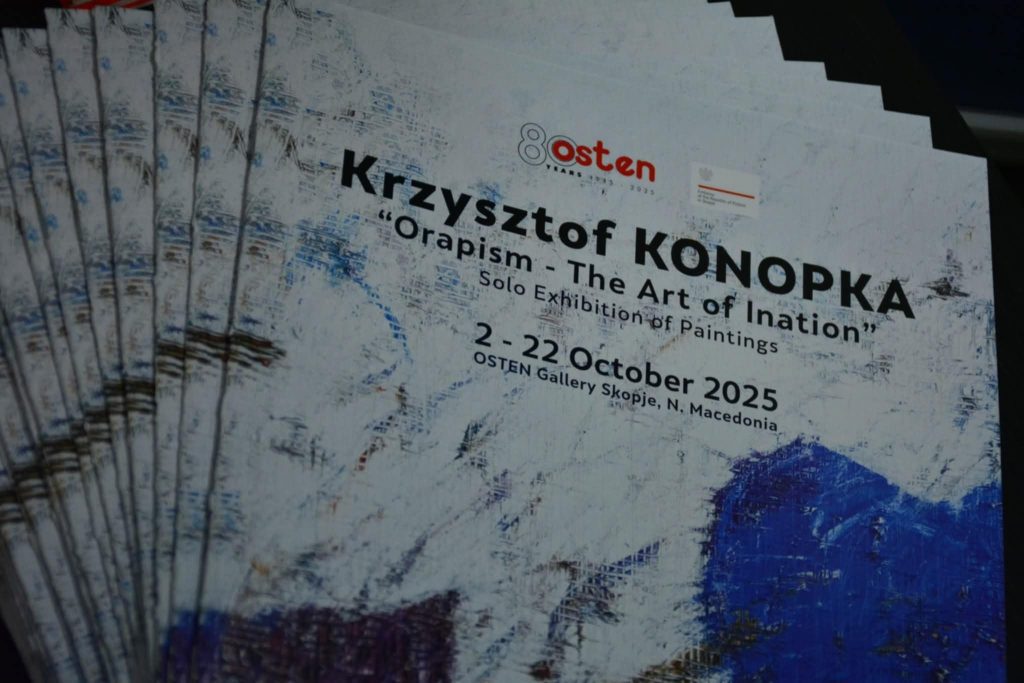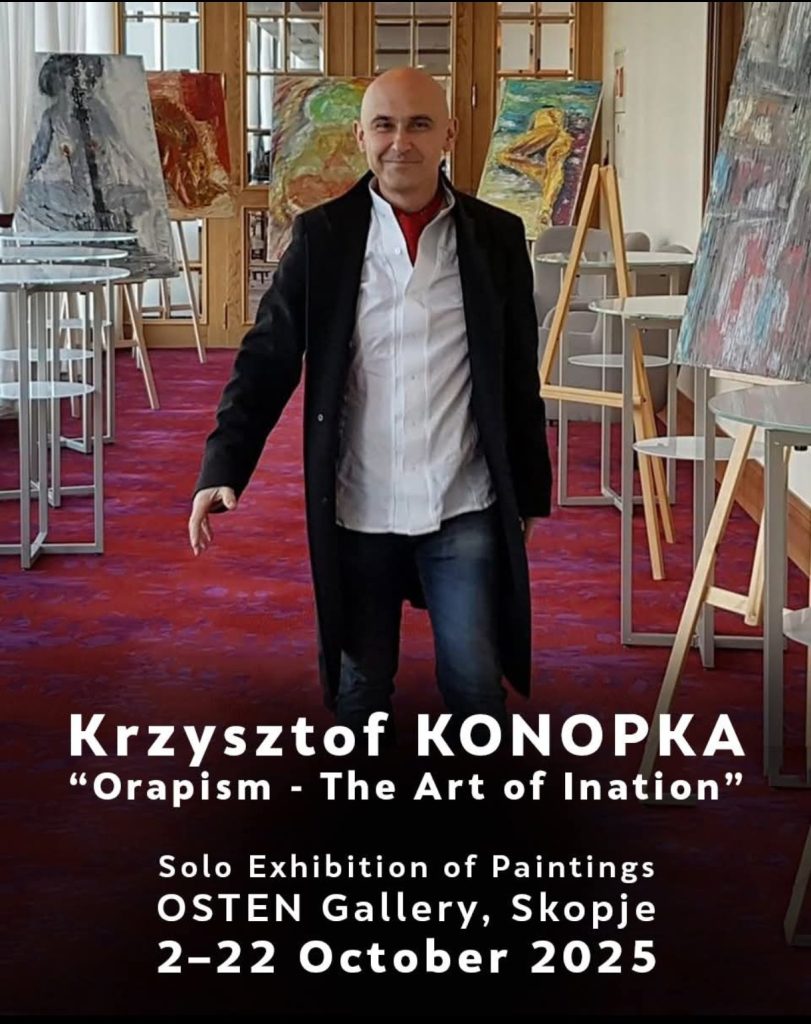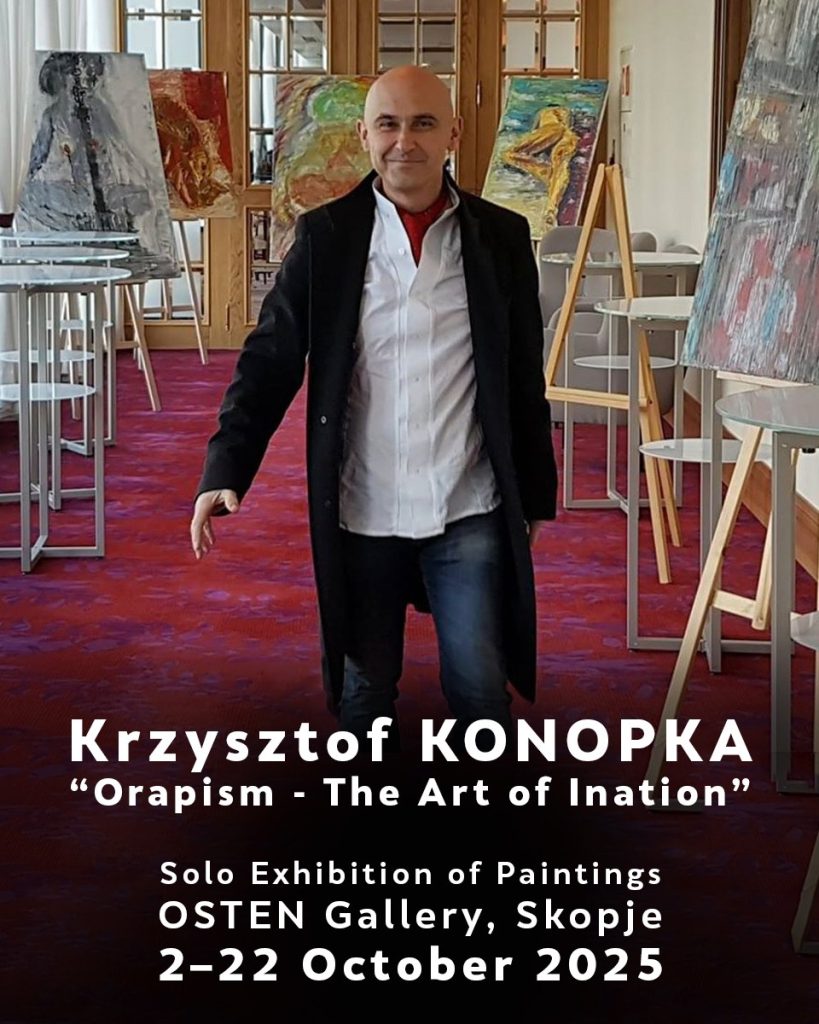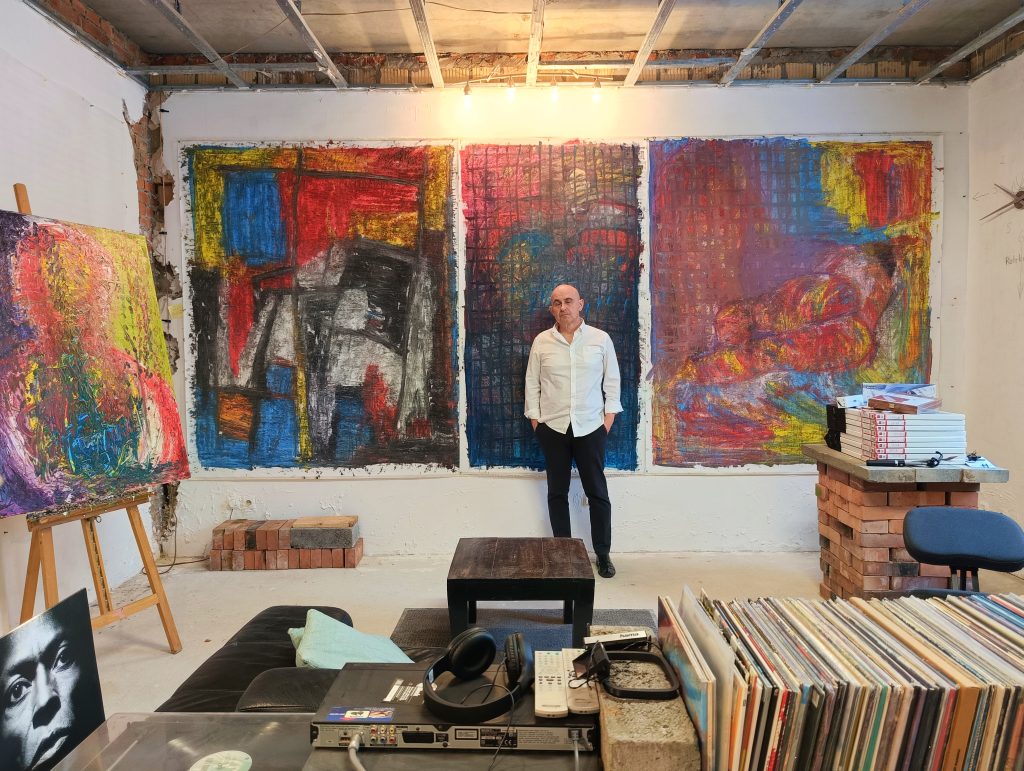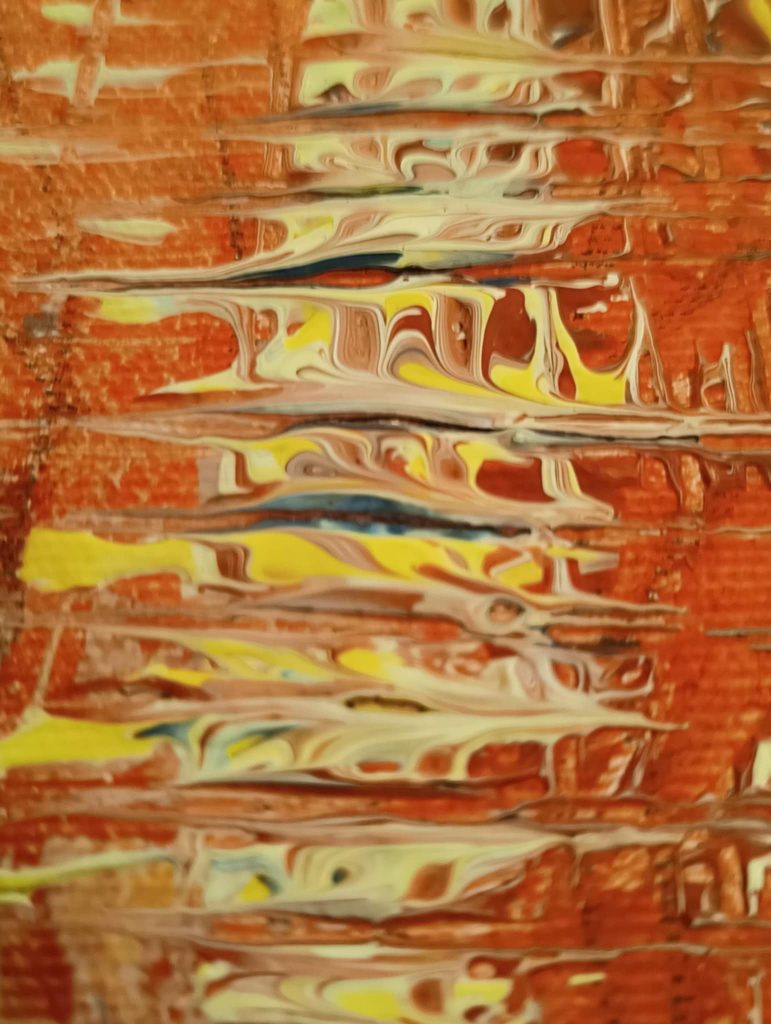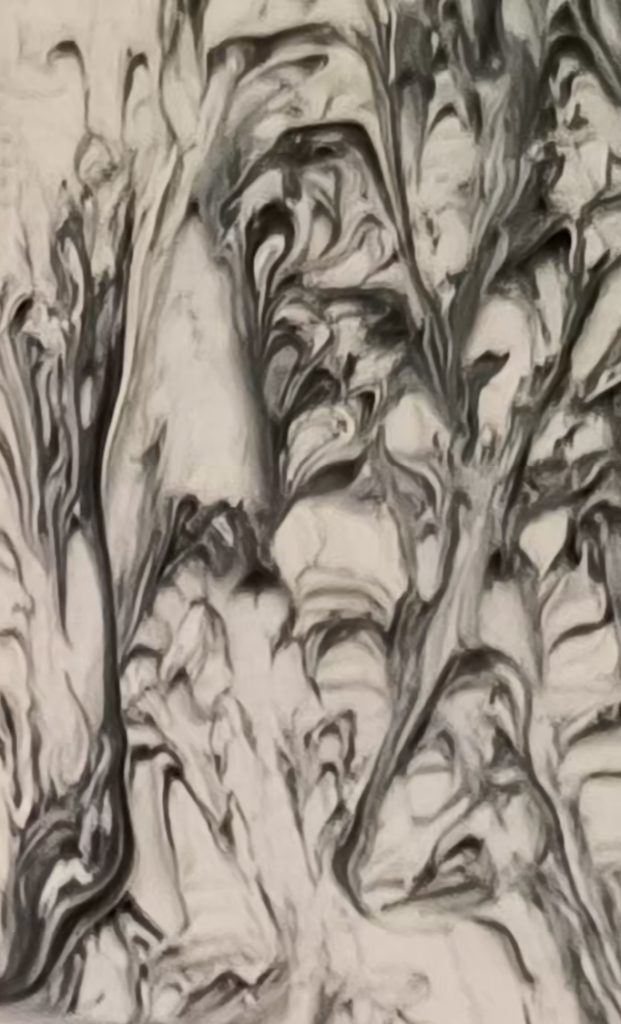2–22 października 2025
ORAPIZM – Sztuka Inacji
Wystawa indywidualna malarstwa Krzysztofa Konopki (Orapisty)
Galeria OSTEN, Skopje | 2–22 października 2025
Kurator: Kornelija Koneska
O ORAPIZMIE
Orapizm dąży do osiągnięcia tego wymiaru w człowieku, który istniał, zanim pojawiła się potrzeba ekspresji. Nie jest stylem ani ruchem, lecz aktem czystej obecności, ucieleśnionym poprzez malowaną powierzchnię.
W sercu ORAPIZMU leży INACJA – stan, w którym artysta przestaje być oddzielony od aktu. Ręka wciąż się porusza, lecz świadomość już jej nie kontroluje; zamiast tego jest świadkiem – w pełni, bez wysiłku. To moment, w którym ego milknie, a coś głębszego przepływa przez ciało i gest: Jaźń.
O ORAPIZMIE I INACJI
To nie technika. To decyzja, by nie kontrolować Źródła. Obraz nie jest rezultatem. Obraz jest przejściem – Jaźni przez ciało, Źródła przez gest. INACJA to moment, w którym ręka tworzy, a świadomość milknie. To poddanie się – by nie korygować Prawdy i nie przyćmiewać światła sobą.
MANIFEST Końca Świata Binarnego w duchu ORAPIZMU i INACJI
- Nie ogłaszam rewolucji. Ogłaszam ciszę.
Nie będzie marszu. Tłumów. Argumentów za i przeciw.
Tylko ta jedna chwila – bez podmiotu i czasownika – gdy farba osiada na płótnie, a ręka nie wie, co czyni. - Binarność umiera z bezsensu.
„Tak” i „Nie” bez ciała – rozpadają się.
„Prawda” i „Fałsz” – martwe – kruszą się jak kreda.
Orapizm z nimi nie walczy. Karmi je… kolorem, ruchem, drżeniem.
A one nie rozumieją – i milkną. - Tu kończy się rozszczepienie. Tu zaczyna się Jaźń. Nie pytajcie mnie, czy to sztuka, czy terapia, filozofia, czy szaleństwo. Tu nie ma dwóch. Nie ma „ja” i „świata”. Nie ma obserwatora i obrazu. Jest tylko Oddech, który kładzie się na płótnie — i pozostawia ślad, którego nie da się zinterpretować. Tylko przeżyty…
- W tym świecie nikt nie wygrywa.
Nie będziesz miał racji.
Nie wejdziesz do historii.
Nie zostaniesz zrozumiany.
Ale… jeśli zatrzymasz się na ułamek sekundy — usłyszysz nienazwaną prawdę, rezonującą tylko w tym, który przestał szukać. - Lewa półkulo, odpocznij teraz.
Nie potrzebujemy już twojej tyranii klasyfikacji.
Wszystko zostało już nazwane — i wszystko spłonęło.
Czas zdjąć zbroję analizy i pozwolić obrazowi przemówić do trzewi, a nie do słownika. - INACJA nie jest końcem działania. To koniec ego w działaniu.
Nie musisz przestawać tworzyć. Musisz przestać chcieć tworzyć coś konkretnego.
Odpocząć od siebie.
Pozwól, by ręka poprowadziła cię w ciemność, gdzie oko nie widzi, ale Jaźń wie. - To nie jest sztuka dla muzeów.
To sztuka na koniec świata.
Kiedy wszystko się zawali — nic nie pozostanie… poza Obecnością.
Obraz, który nie został stworzony dla nikogo — będzie przeżywany przez Wszystko.
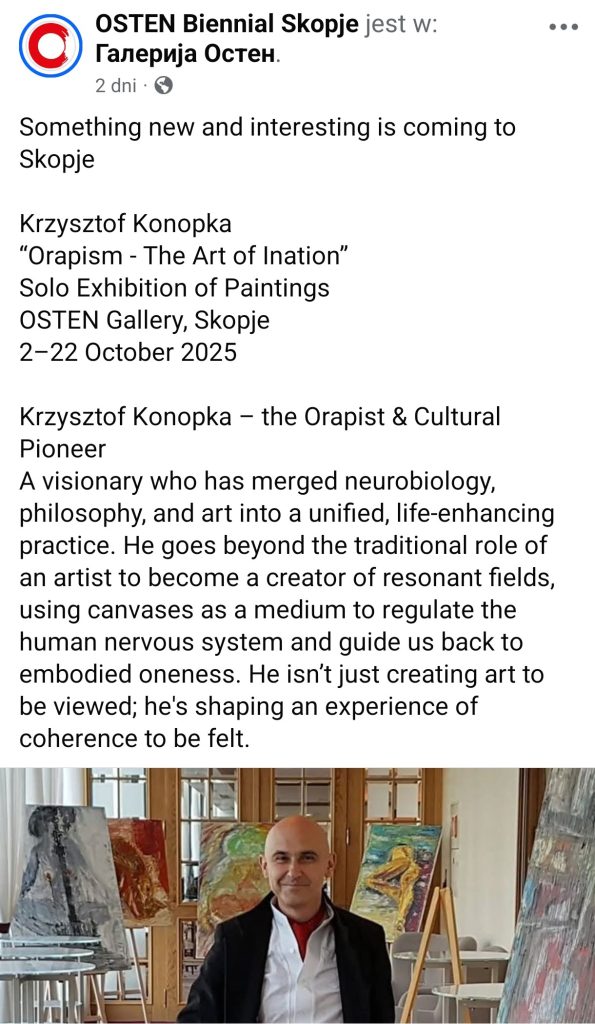
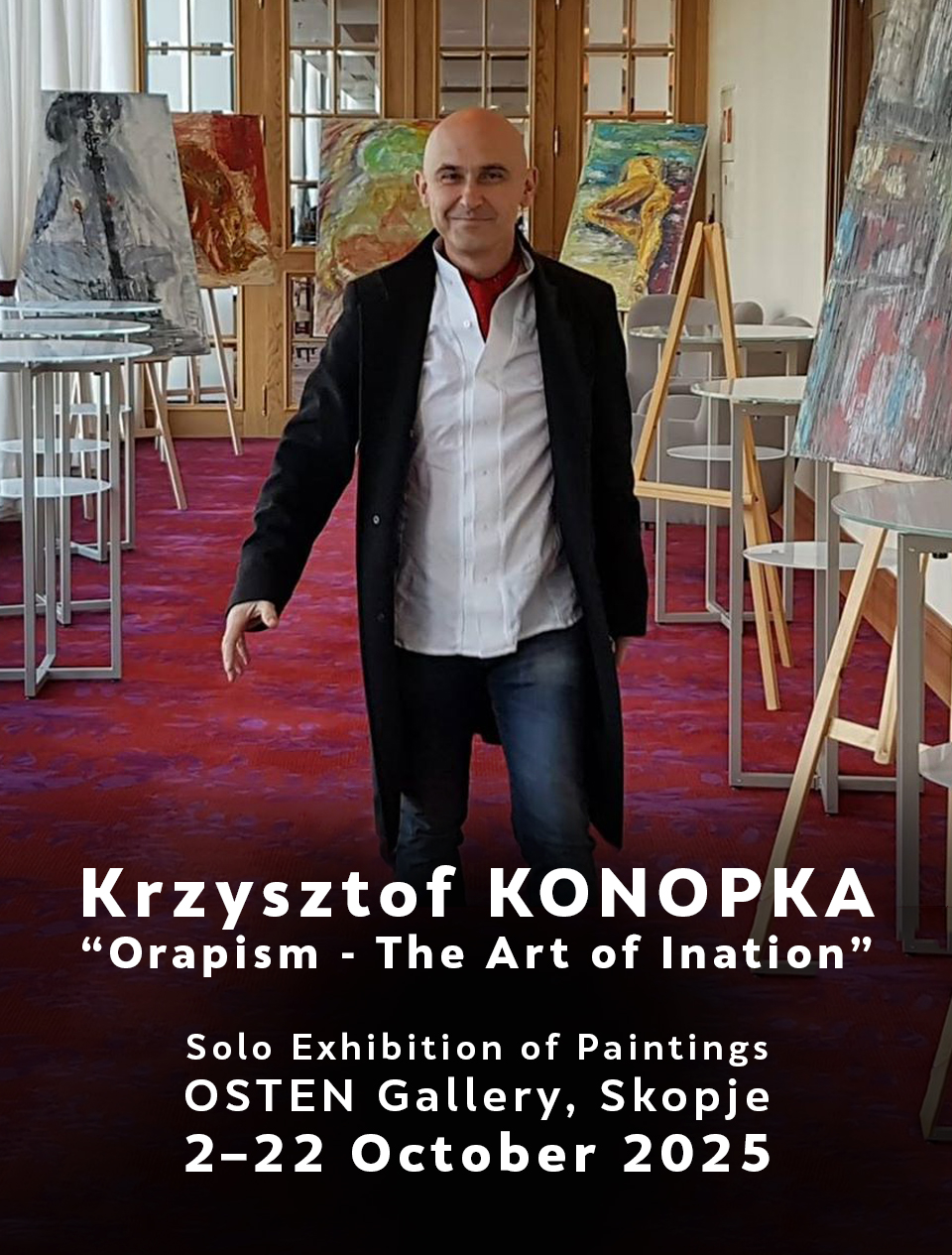
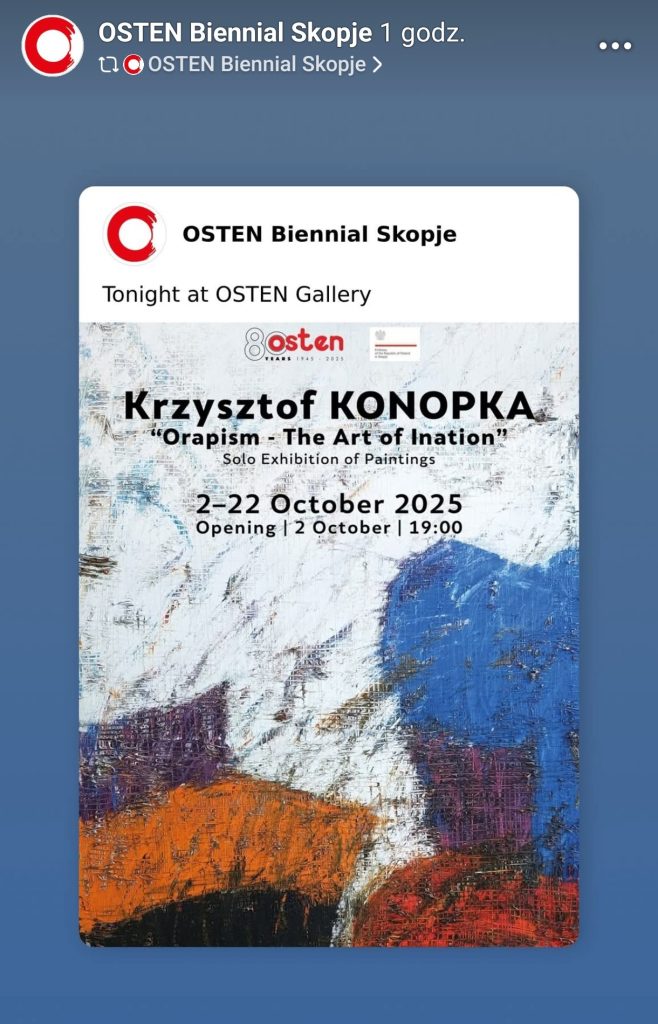
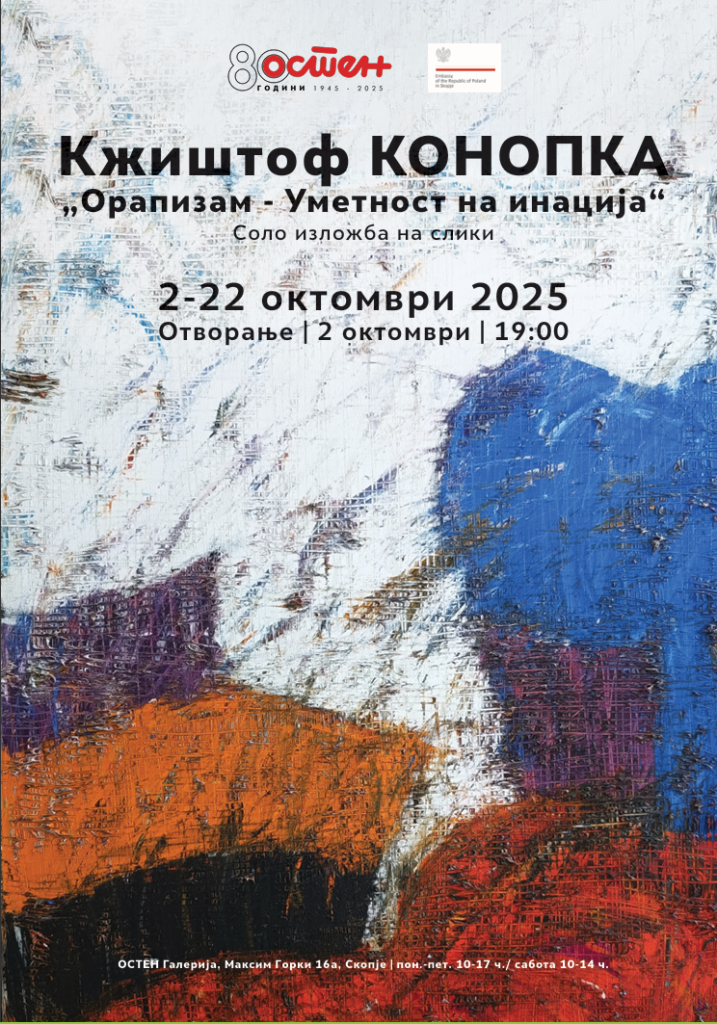
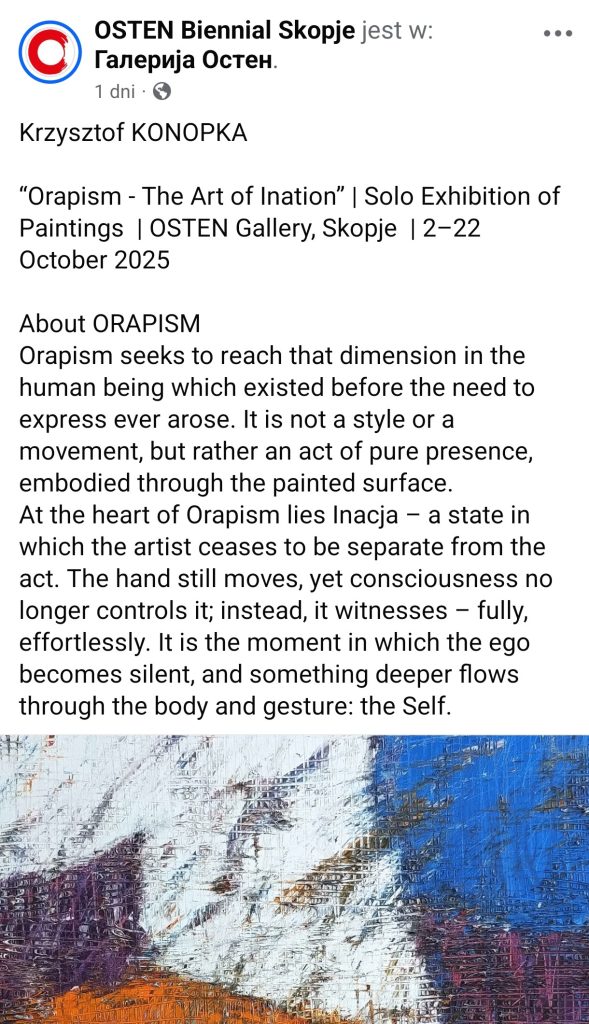
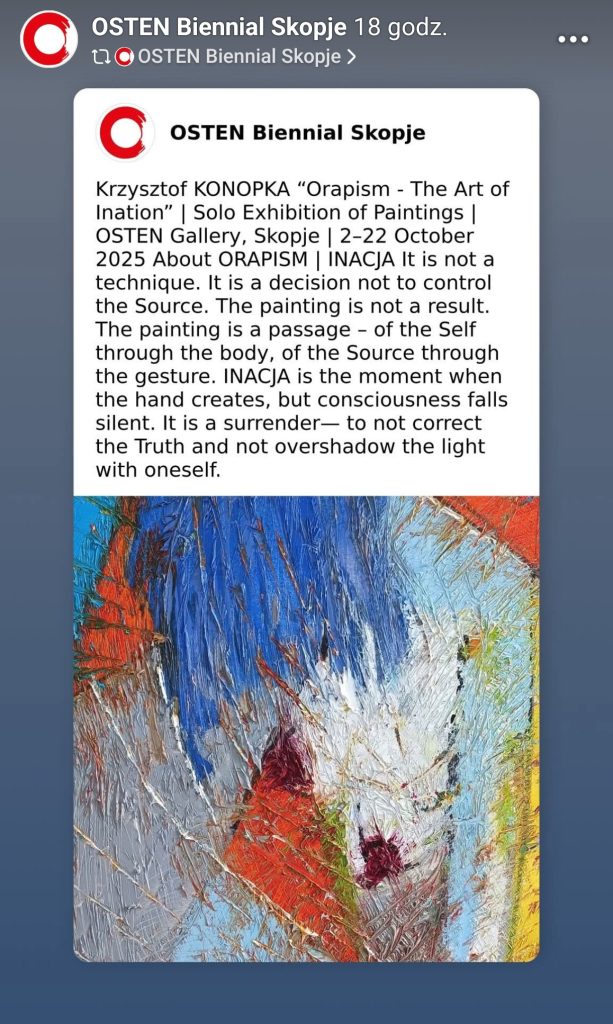
MANIFEST KOŃCA ŚWIATA BINARNEGO W DUCHU ORAPIZMU I INACJI PREZENTOWANY PRZEZ GALERIĘ OSTEN
